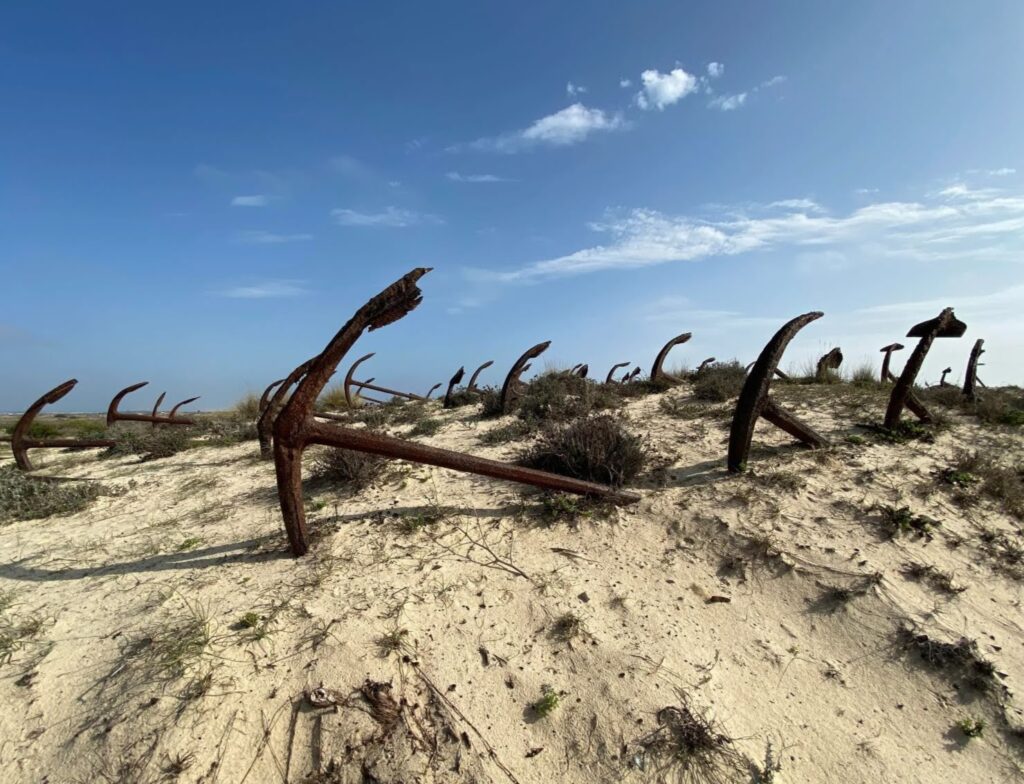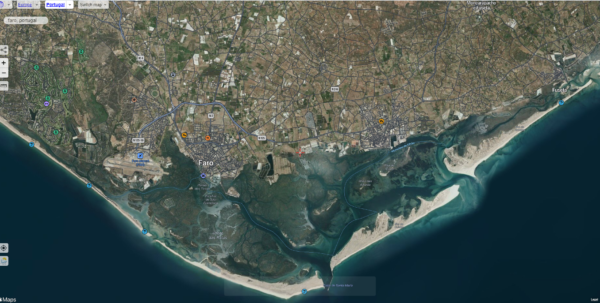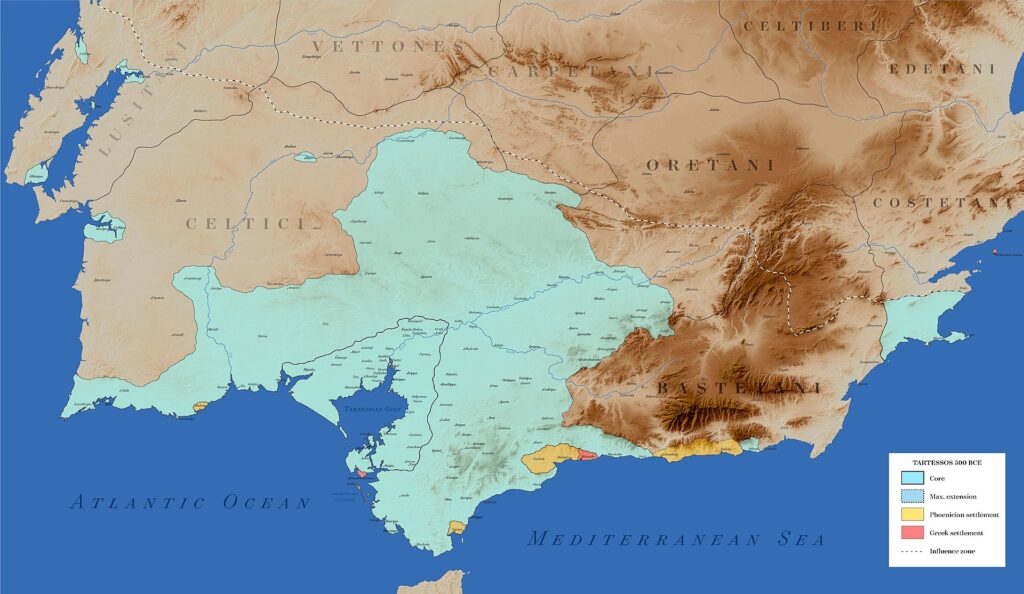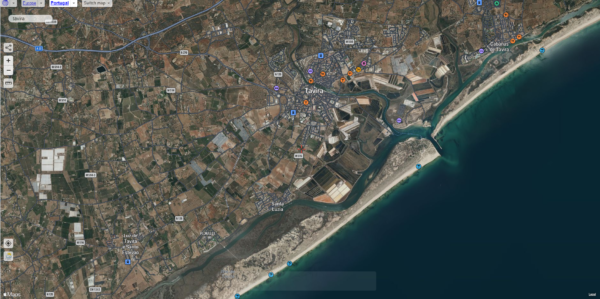The final post in my Olympic Cities series is satirically titled, If it’s on the internet it must be true because while the internet can be a font of truly enlightening information, it is simultaneously a cesspit filled with falsehoods and half-truths. As a traveler with varied and often peculiar interests, I’m delighted to have found sites such as Atlas Obscura, Amusing Planet, and, of course, Find a Grave that provide consistently reliable guidance and insight. On my trip from Lagos to Tavira, the first of these led me to two unplanned stops before I reached my final destination.
Faro and the Capela dos Ossos
Faro is the largest city and has been the administrative capital of the Algarve since shortly after the 1755 earthquake that devastated so much of Portugal. Although it wasn’t unaffected by the massive temblor, the sandy banks of the Ria Formosa Lagoon provided a layer of protection that preserved much of the city and left it positioned to replace Lagos as the region’s capital. If you want to fly to or from the Algarve, you’ll use the airport in Faro.
The Igreja da Ordem Terceira de Nossa Senhora do Monte do Carmo (Church of the Third Order of Our Lady of Mount Carmel) or, more commonly, Igreja do Carmo

isn’t the oldest church in Faro. Arguably that would be the Sé Catedral in the Vila-Adentro neighborhood but, thanks to Atlas Obscura, I chose to visit the former rather than the latter. Although it was significantly damaged by an English attack in the 16th century and also by the 1755 earthquake, the church dates from the 13th century. The first floor tower and two of its chapels remain from the original construction. However, hiding at the back of the Igreja do Carmo is, perhaps, Faro’s most macabre sight – the Capela dos Ossos – the Chapel of Bones.
There’s a €2.00 fee to enter the church and I made a beeline for the chapel paying little attention to the ostentatious display in the nave or to some of the disturbing renderings of Jesus’ life that adjoin it. Having read this description of the Capela
It is not merely decorated with bones — the walls are constructed from femurs with mortar. Skulls and other bones are placed on the interior at regular intervals, including grinning down from the barrel-vaulted ceiling, giving the place a pleasing, yet spooky, symmetry. The highlight of the ossuary is a complete skeleton covered in gold that hangs at the front of the chapel. The practice of moving bones from cemetery plots into ossuaries after a period of time in the ground (usually seven to ten years) was common throughout Catholic Europe until recently. The bones in this ossuary are the remains of 1,245 monks whose bones were displaced when the ossuary was built. There are several other bone chapels in Portugal, the most famous being in Evora.
on Atlas Obscura, it was all I wanted to see. It didn’t prompt deep thoughts about my mortality but it was…

an interesting detour.
Next stop Praia do Barril
My reactions to the places I read about on Atlas Obscura run the gamut from, “I’ll give this a miss,” to “I can’t miss this,” and anything in between. In the case of the Cemitério das Âncoras, it was just a little too bizarre to miss even if it meant parking some distance away and walking a kilometer or two to get there.
Fortunately, the skies had begun to clear as I’d wandered around Faro and finished my light lunch so by the time I reached Praia do Barril, the day had turned quite pleasant.
Everyone who has followed these posts knows of my interest in cemeteries but this isn’t a cemetery in any traditional sense of the word. It’s analogous in some ways to the Airplane Boneyard in Tucson but even that’s a bit of a stretch. Both the title of this post and the name Cemitério das Âncoras provide the clues to what I’d find there.

Yes, it’s a beach lined with anchors. This is the description on Atlas Obscura that led me there:
NO ONE KNOWS WHO PLACED the first of the hundreds of rusted anchors along the sand dunes of Praia do Barril Beach. But locals continued adding the gnarled weights to honor the small tuna fishing community that once flourished in the area.
The anchors were used to weigh down the nets for catching tuna. They’re lined up in rows and exist without any real pomp or officiality. Fishing in the area was a dangerous and difficult profession, but the unpredictable waters where the Atlantic meets the Mediterranean were bustling with bluefin tuna. The technique for catching them was unique to the area, and was probably invented by the ancient Romans who colonized the area.
Algarve thrived on tuna fishing for centuries, but local fisherman had to give up their occupation in the 1960s when the numbers of fish declined. Their anchors were just left on the beach to rust—until someone came up with the artistic idea.
I ended up thinking about it far longer than the time I actually spent there. Longer than I thought about the Capela for that matter.
The Eastern Algarve
Although my stay in both was brief, I had two ports of call in the Eastern Algarve – Faro and Tavira. I’ll provide a highly condensed history of each starting with Faro.
While there’s evidence of Paleolithic people inhabiting the area, the earliest evidence of permanent settlements date to the Phoenicians in the fourth century BCE. A century later the area came under Roman control but retained the Phoenician name of Ossonoba. Looking at it from above, it’s relatively easy to see why even ancient people found the spot appealing.

As this view from satellites.pro shows, there’s abundant fresh water and easy access to the ocean for fishing. There are barrier islands that protect the city from severe weather – and even, as it turned out, a massive earthquake.
By the fourth century CE, the city held a Bishop’s seat that it retained until the eighth century when the Moors displaced the Visigoths who had previously displaced the Romans. During their five century rule, the Moors built a mosque where there had once been a church and, although Alfonso Henriques had retaken the west coast and become Portugal’s first king in 1147, the Algarve remained in Moorish hands far longer.
In the early 13th century the area around Faro became a small kingdom ruled by a family named Harum and this eventually transformed into the current name Faro (pronounced FAH-ru). It was retaken in 1249 by King Afonso III and he replaced the mosque with the Igreja Santa Maria.

Like its counterpart a few kilometers to the west, Tavira was an important part of several empires. The earliest settlements date to the bronze age approximately 1000 BCE and in the latter part of that period – around 800 BCE – it might have been part of a culture known as the Tartessos

(Wikimedia Commons by Lanoyta-Own-work-CC-BY-SA-4.0)
that mysteriously abandoned the territory in the 5th century BCE.
Tavira’s history follows a similar arc to Faro’s – Romans, Visgoths, Moors, Portuguese. Although the Romans viewed the town as strategically located, they built a new port called Balsa a few kilometers west of the center of the old city. When the Roman Empire collapsed, in the early fifth century, a Germanic tribe known as the Suebi took control of the region. They were ousted relatively quickly by the Visigoths who ruled until the eighth century invasion by the Moors.
Five hundred years of Moorish rule left a lasting mark on the city and most likely one of the first stops for any visitor (as it was for me) is the Castelo de Tavira, the remains of an 11th century Moorish castle with its beautiful garden and fabulous city views.

At the end of the day
I finished my day in Tavira with dinner in an outdoor café along the river expecting that I’d chosen ambience over quality – and indeed I had. The chicken Piri-Piri was too bland for my palate but the salad was fine and they made up in quantity what they lacked in quality. I had a nice conversation with a young couple from Stuttgart prompted by my playfulness with their very active 18 month old daughter.
It’s probably unfair to judge a town based on one afternoon and evening but Tavira is farther from the ocean than I expected. In fact, you need to take a ferry to reach its famous beaches.

(From satellites.pro)
I was also a bit surprised at how the town seem to roll up by about 21:00. I’d expected about the same level of off-season nightlife as I’d seen in Lagos – a similarly sized town. But such was not the case. Or perhaps, staying where I stayed, I simply missed it.
Tomorrow, it’s off to Lisbon. All my photos from the day are here.